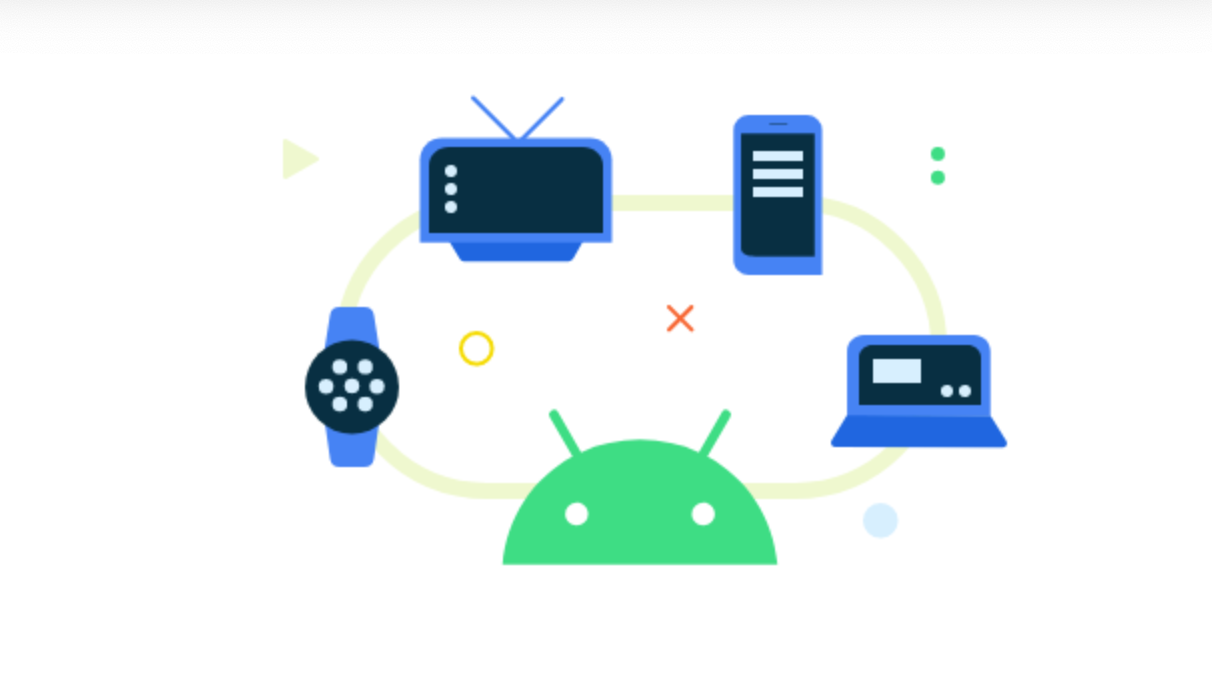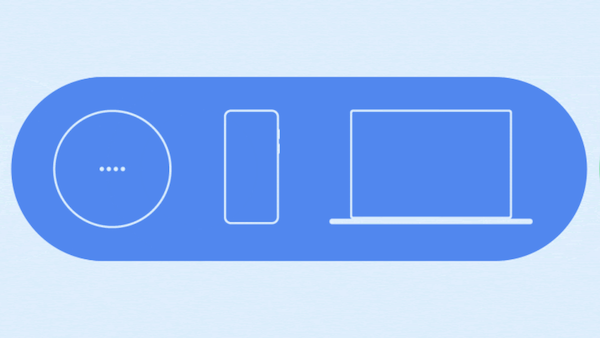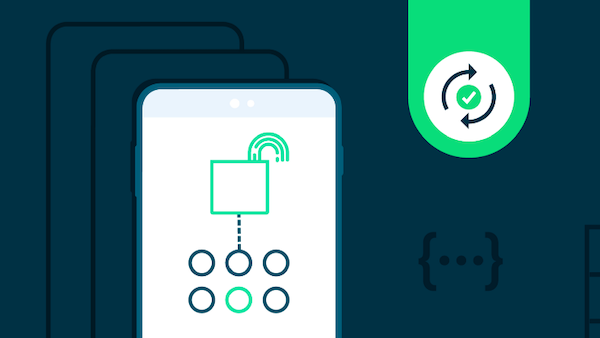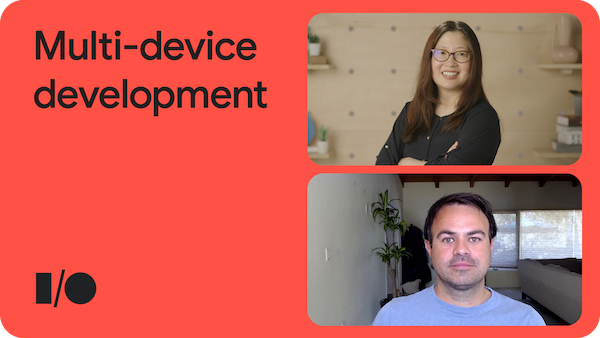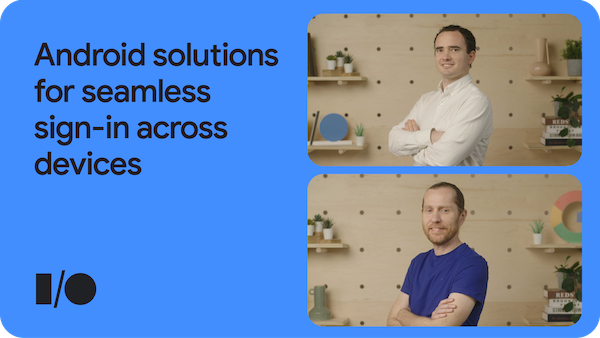
মাল্টিডিভাইস ডেভেলপমেন্ট
আপনি যেভাবে আকর্ষক, ক্রস-ডিভাইস অভিজ্ঞতা তৈরি করেন আমরা তা পরিবর্তন করছি। অ্যান্ড্রয়েড ডিভাইসের ইকোসিস্টেম জুড়ে ডিভাইসগুলিকে একে অপরের মানকে সমন্বিত করতে সক্ষম করে এমন একটি মূল কাঠামো এবং ক্ষমতাগুলি ডিজাইন, তৈরি এবং সরবরাহ করার মাধ্যমে, আমরা নিশ্চিত করছি যে সবকিছু একসাথে ভালভাবে কাজ করে৷
সরলীকৃত ক্রস-ডিভাইস ইন্টারঅ্যাকশন
বিল্ডিং ক্রস-ডিভাইস অভিজ্ঞতাগুলিকে রহস্যময় করতে, আমরা একটি সফ্টওয়্যার স্ট্যাক তৈরি করেছি যা অন্তর্নিহিত সংযোগ প্রযুক্তিগুলিকে বিমূর্ত করে। আপনার ব্যবহারকারীদের ডিভাইসের সংযোগ ক্ষমতা সম্পর্কে আপনাকে আর চিন্তা করতে হবে না।
নমনীয় বিকাশকারী টুলকিট
আমাদের মডুলার পদ্ধতির সাহায্যে, আপনি আমাদের ক্রস ডিভাইস SDK কে অন্যান্য Google সমাধানের সাথে মিশ্রিত করতে এবং মেলাতে পারেন৷ বাধ্যতামূলক মাল্টিডিভাইস অভিজ্ঞতা তৈরি করতে আপনার প্রয়োজনীয় সরঞ্জামগুলি গ্রহণ করুন।
উন্নত ব্যবহারকারীর অভিজ্ঞতা
মাল্টিডিভাইস সাইন-ইন এর ঘর্ষণ কমিয়ে ব্যতিক্রমী ব্যবহারকারীর অভিজ্ঞতা প্রদান করুন। ডিভাইসগুলির মধ্যে আরও বিরামহীন মিথস্ক্রিয়া তৈরি করুন।
ক্রস-প্ল্যাটফর্ম উন্নয়ন
আমরা জানি যে বিকাশকারীরা শুধুমাত্র Android এর জন্য তৈরি করে না। এই কারণেই আমরা ক্রস-প্ল্যাটফর্ম ডেভেলপমেন্টকে সমর্থন করতে চাই, ChromeOS এবং অন্যান্য প্ল্যাটফর্মগুলিকে কভার করার জন্য Android এর বাইরেও প্রসারিত।
মাল্টিডিভাইস ব্যবহারের ক্ষেত্রে

ব্যক্তিগত অভিজ্ঞতাসমূহ
- আপনার পেমেন্টের তথ্য লিখতে আপনার ফোন ব্যবহার করে আপনার টিভিতে একটি সিনেমা ভাড়া করুন।
- আপনার ফোনে একটি নিবন্ধ পড়া শুরু করুন এবং আপনার স্থান না হারিয়ে আপনার ট্যাবলেটে এটি শেষ করুন৷

সাম্প্রদায়িক অভিজ্ঞতা
- একজন যাত্রী হিসাবে, আপনার বন্ধুর গাড়ির সাথে সরাসরি একটি মানচিত্রের অবস্থান ভাগ করুন৷
- আপনি বাইক চালাচ্ছেন এমন অন্যদের সাথে আপনার রবিবারের বাইক রুট শেয়ার করুন।
- আপনার ফোনের চারপাশে পাস না করে একটি গ্রুপ ফুড অর্ডারের জন্য আইটেম সংগ্রহ করুন।
স্ক্রিন জুড়ে Spotify
Spotify-এর লক্ষ্য লক্ষ লক্ষ নির্মাতাদের কোটি কোটি ভক্তের সাথে সংযুক্ত করা। বিভিন্ন অ্যান্ড্রয়েড ডিভাইস এবং Wear OS, ফোল্ডেবল এবং ট্যাবলেট, Android TV, এবং Android for Cars-এর মতো ফর্ম ফ্যাক্টরগুলি জুড়ে উপলব্ধ থাকা এবং সেইসাথে Google অ্যাসিস্ট্যান্টের ভয়েস ক্ষমতাগুলি ব্যবহার করা Spotify-কে এই মিশনটি অর্জনে সহায়তা করছে সে সম্পর্কে জানুন।
টুলকিট অন্বেষণ
Google-এর টুল দিয়ে আপনার নিজের ক্রস-ডিভাইস অভিজ্ঞতা তৈরি করুন।
ক্রস ডিভাইস SDK
আমাদের ক্রস ডিভাইস SDK-এর সাহায্যে, আপনি সহজেই কাছাকাছি ডিভাইসগুলি আবিষ্কার করতে পারেন, সুরক্ষিত সংযোগ স্থাপন করতে পারেন এবং ডিভাইসগুলির মধ্যে একটি অভিজ্ঞতা সরাতে পারেন৷ আপনি যদি ডিভাইসগুলির মধ্যে দ্বি-দিকনির্দেশক যোগাযোগ এবং API 26 এর পিছনের সামঞ্জস্যতা খুঁজছেন, এই SDK শুরু করার জন্য একটি দুর্দান্ত জায়গা।
Nearby
আমাদের কাছাকাছি প্ল্যাটফর্মে নিম্ন-স্তরের ক্ষমতা রয়েছে যা ডিভাইসগুলির মধ্যে সহজ একমুখী সংযোগ স্থাপন করা সহজ করে। আপনি যদি গ্রানুলার কন্ট্রোল খুঁজছেন এবং আপনার অভিজ্ঞতা শুধুমাত্র অ্যান্ড্রয়েড ডিভাইসের সাথে জড়িত, তাহলে এই APIগুলি ব্যবহার করে দেখুন।
Cast
Google Cast SDK মিডিয়া এবং বিনোদন অ্যাপ্লিকেশন বিকাশকারীদের জন্য ডিজাইন করা হয়েছে৷ ডিভাইস জুড়ে নির্বিঘ্নে প্রবাহিত করতে আপনার সামগ্রী সক্ষম করুন। আপনার অ্যান্ড্রয়েড, আইওএস, বা ওয়েব অ্যাপ্লিকেশনটিকে এর ভিডিও এবং অডিও স্ট্রিমিংকে একটি টিভি বা সাউন্ড সিস্টেমে পরিচালনা করতে প্রসারিত করুন৷
ব্লক স্টোর
আপনার অ্যাপ্লিকেশানের প্রমাণীকরণের প্রয়োজন হলে, আমাদের ব্লক স্টোর API ব্যবহার করে আপনার ব্যবহারকারীদের জন্য অন্য ডিভাইসে আপনার অ্যাপে নির্বিঘ্নে সাইন-ইন করা সহজ করুন৷ ব্লক স্টোর API আপনার অ্যাপটিকে ব্যবহারকারীর শংসাপত্রগুলি সঞ্চয় করার অনুমতি দেয় যা পরে এটি একটি নতুন ডিভাইসে ব্যবহারকারীদের পুনরায় প্রমাণীকরণ করতে পুনরুদ্ধার করতে পারে।
নমুনা অ্যাপস
আমাদের নমুনা অ্যাপ্লিকেশানগুলি কাজের কোডের উদাহরণ যা আপনি ব্রাউজ করতে, চালাতে এবং আপনার নিজস্ব মাল্টিডিভাইস অভিজ্ঞতা বিকাশ শুরু করতে শিখতে পারেন৷
SDK কাস্ট করুন, SDK কাস্ট করুন৷
অ্যাপ্লিকেশানগুলি অন্বেষণ করুন যেগুলি Google Cast ডিজাইন চেকলিস্ট এবং Google Cast বিকাশের সর্বোত্তম অনুশীলনগুলি অনুসরণ করে৷
কাছাকাছি সংযোগ
ওয়াকি টকি স্যাম্পল অ্যাপের মাধ্যমে অন্যান্য ডিভাইসে অডিও স্ট্রিম করতে আশেপাশের সংযোগ API কীভাবে ব্যবহার করবেন তা দেখুন।
ক্রস ডিভাইস SDK
আমাদের নতুন ক্রস ডিভাইস SDK ব্যবহার করে রক, কাগজ, কাঁচির একটি মাল্টি-ডিভাইস গেম তৈরি করতে শিখুন।
সর্বশেষ খবর
ব্লগ
Android-এ সমৃদ্ধ মাল্টি-ডিভাইস অভিজ্ঞতা তৈরির জন্য ক্রস ডিভাইস SDK ডেভেলপার প্রিভিউ ঘোষণা করা হচ্ছে
আমরা অ্যান্ড্রয়েডের জন্য ক্রস ডিভাইস SDK-এর বিকাশকারী পূর্বরূপ চালু করেছি। Google I/O '22 মাল্টিডিভাইস ডেভেলপমেন্ট সেশনের সময় প্রথম ঘোষণা করা হয়েছিল, ক্রস ডিভাইস SDK ডেভেলপারদের একটি সহজ এবং স্বজ্ঞাত API-এর সেট ব্যবহার করে সমৃদ্ধ, মাল্টিডিভাইস অভিজ্ঞতা তৈরি করতে সাহায্য করে। এই SDK ডিভাইস আবিষ্কার, প্রমাণীকরণ, এবং সংযোগ প্রোটোকলের সাথে কাজ করার অনেক জটিলতা দূর করে।
ব্লগ
CES 2022: অ্যান্ড্রয়েড এবং তার পরেও একসাথে ভাল
2021 সালে ইউএস পরিবারের গড় 25টি কানেক্ট করা ডিভাইস ছিল, যা 2019 সালে 11টি থেকে বেশি। আপনি যদি আমার মতো হন, তাহলে আপনি ব্র্যান্ড নির্বিশেষে আপনার জন্য সবচেয়ে ভাল কাজ করে এমন ডিভাইস বাছাই করতে চান। এছাড়াও আপনি সহজেই সেট আপ করতে চান এবং আপনার সারা দিন ধরে একটি ডিভাইস থেকে অন্য ডিভাইসে যেতে চান, এবং একই গান বা টাস্ক বারবার আপ না করেও।
ব্লগ
ব্লক স্টোরের সাথে বিরামহীন অ্যাকাউন্ট স্থানান্তর
ব্লক স্টোর API আপনার অ্যাপটিকে ব্যবহারকারীর শংসাপত্রগুলি সঞ্চয় করার অনুমতি দেয় যা পরে এটি একটি নতুন ডিভাইসে ব্যবহারকারীদের পুনরায় প্রমাণীকরণ করতে পুনরুদ্ধার করতে পারে। আপনার শংসাপত্রের ডেটা ডিভাইসগুলির মধ্যে স্থানান্তরিত হয় যখন একজন ব্যবহারকারী অন্য একটি ডিভাইস ব্যবহার করে বুটস্ট্র্যাপ করে।











